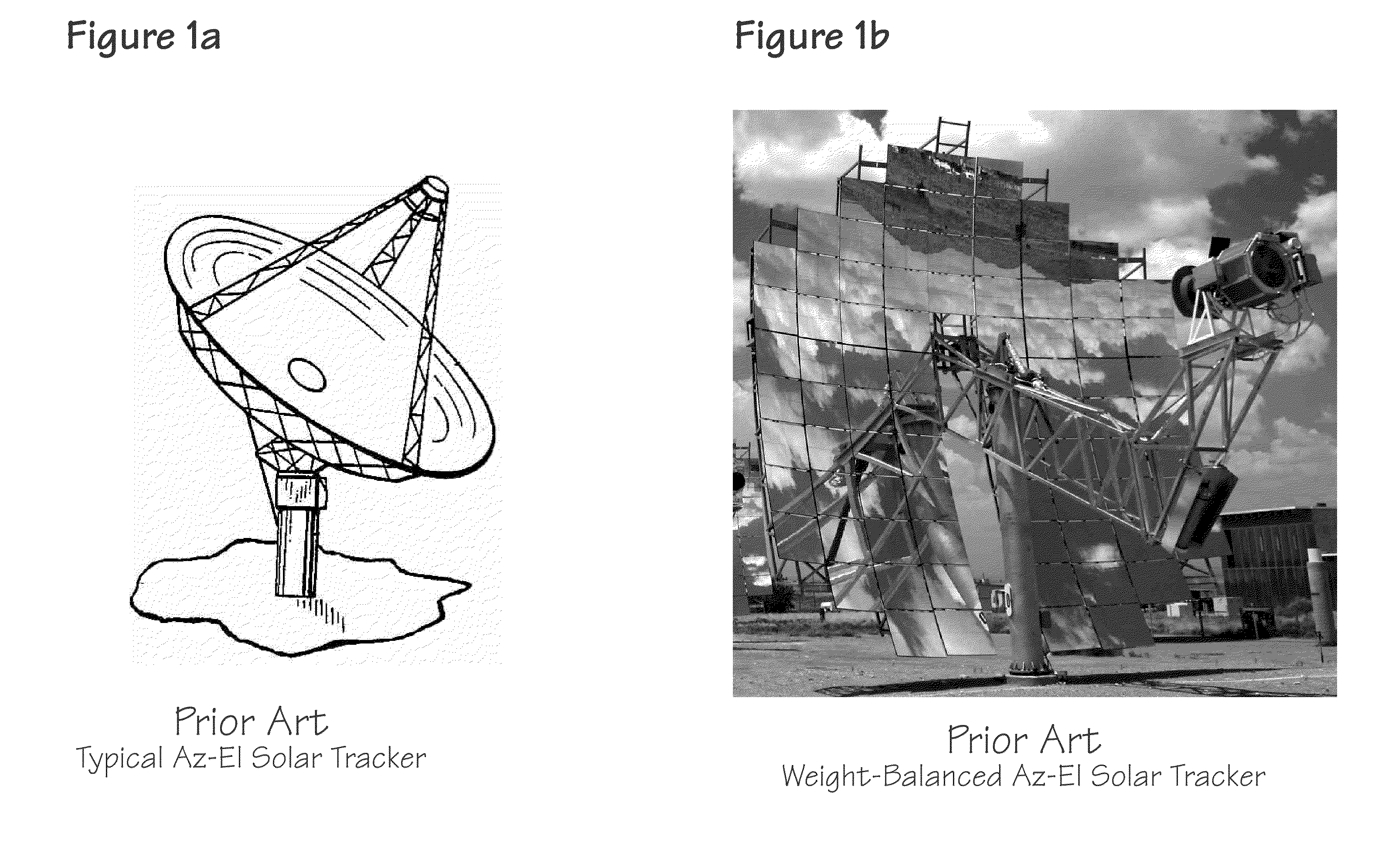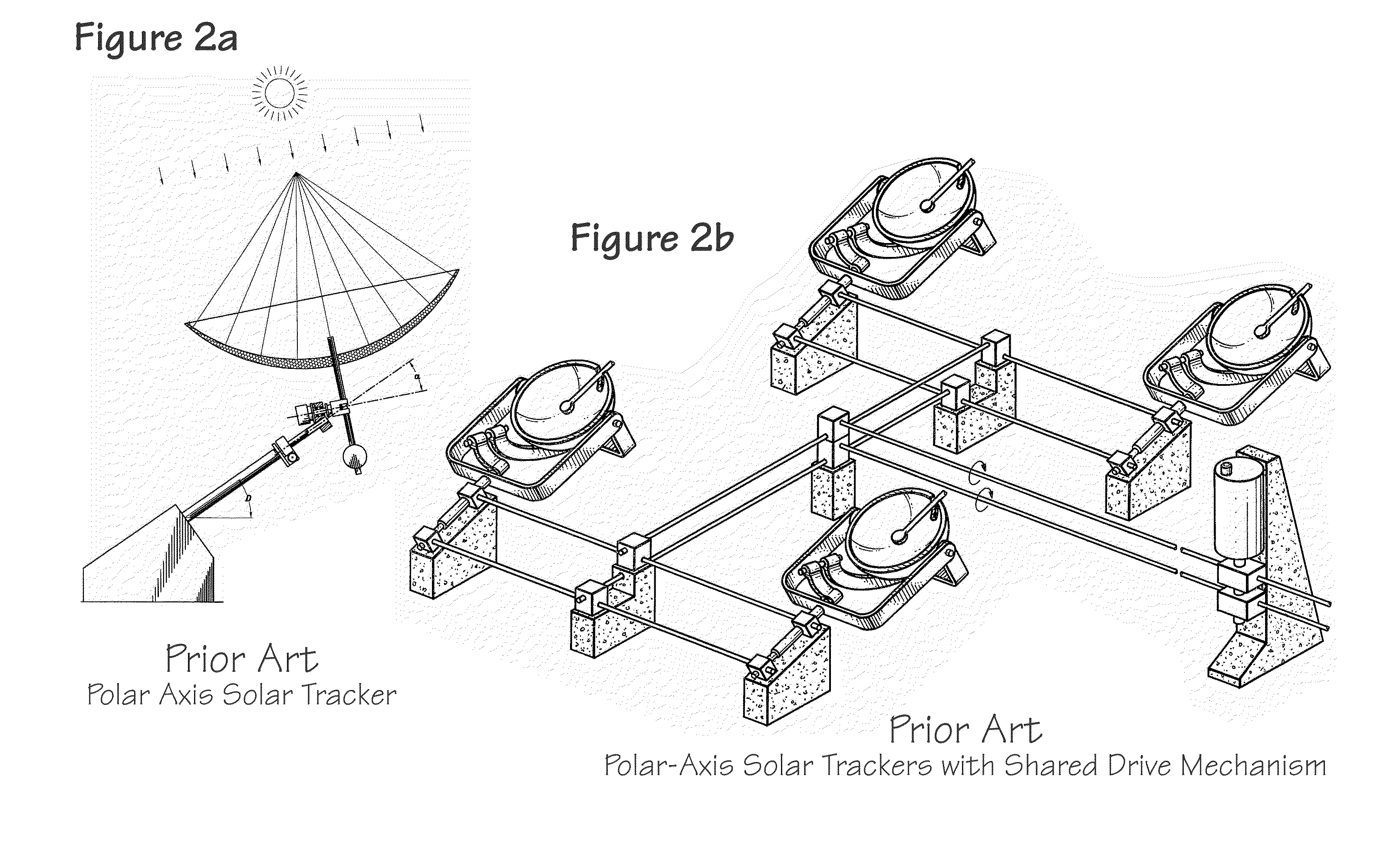Economical Polar-Axis Solar Tracker for a Circular Reflective Dish
a solar tracker and reflective dish technology, applied in the field of solar energy, can solve the problems of large torque required to properly orient such a tracker, simplistic tracking schemes that could easily be confused to the point of no longer working, and large torques
- Summary
- Abstract
- Description
- Claims
- Application Information
AI Technical Summary
Benefits of technology
Problems solved by technology
Method used
Image
Examples
Embodiment Construction
[0028]In FIGS. 3a and 3b, a working prototype of one embodiment of this invention is shown photographically from two different views. While this prototype has been useful in proving the essential concepts of this invention to be valid and workable, the preferred embodiment is described in the following text and figures, and not in these photographs. The photographs are provided because they help the reader to better visualize the 3-dimensional structure and shape of the preferred embodiment, which may be harder to grasp from the 2-dimensional drawings.
[0029]The fundamental details of the preferred embodiment are shown schematically in FIG. 4. Support base 401 provides a stable platform for the tracker, the long axis of which should be accurately aligned in a true north-south direction. FIG. 4 is drawn for a tracker at 28.46 degrees latitude, which would be appropriate for an installation near New Delhi, India. FIG. 4 shows a West-looking view of that tracker, so that rightward on th...
PUM
 Login to View More
Login to View More Abstract
Description
Claims
Application Information
 Login to View More
Login to View More - R&D
- Intellectual Property
- Life Sciences
- Materials
- Tech Scout
- Unparalleled Data Quality
- Higher Quality Content
- 60% Fewer Hallucinations
Browse by: Latest US Patents, China's latest patents, Technical Efficacy Thesaurus, Application Domain, Technology Topic, Popular Technical Reports.
© 2025 PatSnap. All rights reserved.Legal|Privacy policy|Modern Slavery Act Transparency Statement|Sitemap|About US| Contact US: help@patsnap.com



